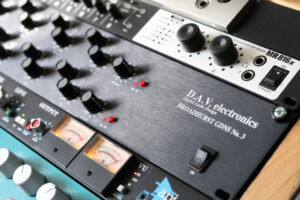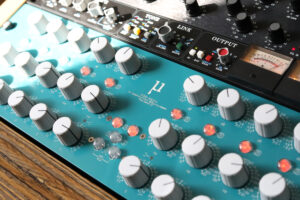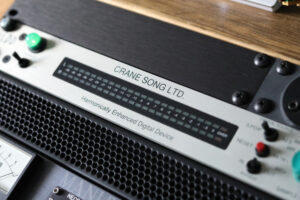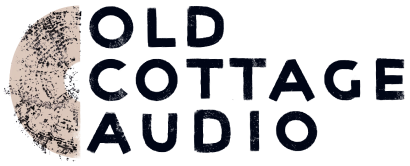The Gyraf Gyratec XIV mastering EQ is a hand-built, Danish tube EQ. With its tube and transformer heavy tone, along with its ultra-broad curves and parallel topology, it is a more vintage style ‘character’ EQ meant more for colouring with broad brush strokes than precisely notching frequencies.
What does the Gyraf Gyratec XIV sound like?
The Gyraf Gyratec XIV EQ is about as close to a ‘pure’ tube EQ as it gets. And it sounds that way too. While much modern tube equipment is surprisingly clean, the Gyratec XIV wears its vintage electronics on its sleeve. Packed with Lundahl transformers as well, the Gyratec XIV tends to smooth transients and impart a buttery, luscious character to audio. Although it can be relatively clean, the magic happens when the output knob is turned up, driving the transformers harder.
As an EQ, the Gyratec XIV is exceptionally musical, allowing you to make big broad changes without the mix falling apart. And boosts are absolutely magic, never tipping into harshness even when pushing further than you might on another EQ. It’s one of those boxes that’s easy to overdo, because it just never sounds bad.
Why is the Gyraf Gyratec XIV useful?
The Gyraf Gyratec XIV is primarily useful as a secondary character EQ to a cleaner unit like the Custom Audio Germany HDE-250. Rather than a detail EQ, its something to use for an audible sonic stamp, to give tracks a warm, rounded, lustrous quality.
I also find that it’s good when drastic tone shaping is required. My cleaner options are no slouch in this department, but there’s something about the Gyratec XIV’s canyon-wide curves that lend itself to pronounced changes without revealing itself.
It’s an approach actively encouraged by the design of it. Designer Jakob Erland says the EQ is tuned more to what you think each frequency sounds like, rather than precisely mapping the selected frequencies perfectly. 280Hz isn’t necessarily 280Hz. And with no values on the gain and Q knobs, you’re left to make choices purely by ear, rather than being misled by overthinking. Just dive in until it sounds good.
History of the Gyraf Gyratec XIV
The Gyraf Gyratec XIV is hand-built by one-man pro audio producer Jakob Erland. It was intended to embody a more vintage style mastering EQ as a counterpart to a precision Sontec-style EQ (like the Custom Audio Germany HDE-250).
As such, the tone is decidedly warm and slow. And the curves effectively mirror the famous Pultec EQs, though with adjustable Q, five bands, and far more selected frequencies, the Gyratec XIV is far more flexible than a Pultec will ever be.
The Gyraf Gyratec XIV has now been superseded by the Gyratec XIV-S, which allows users to switch between solid-state and tube paths, while retaining the same EQ curves. The unit at Old Cottage Audio is one the original, tube-only models.
Interesting features of the Gyraf Gyratec XIV at Old Cottage Audio
Tubes last much longer than most people imagine. Having bought my Gyraf Gyratec XIV from a recording studio in Edinburgh, I never even glimpsed the inside of it the whole time I was mastering in Brighton (a good ten years). It was only after moving to Bristol – and setting up as Old Cottage Audio – that the tubes failed on me.
After discussion with Derek Rocco of Watford Valves – tube supplier to Abbey Road, among others – he recommended I replace the NOS Teslas that were in the unit with a balanced triode pair of newly manufactured Philips. He explained that Philips had bought the famous Mullard, which used to supply vacuum tubes to the British military, and these tubes were built to the same design. Essentially a cost-effective way of getting the lusted-after Mullard tone for a fraction of the price of NOS.
Explore more equipment

DAV Electronics BG3
The DAV Electronics BG3 mastering EQ is broad tone-shaping EQ made with the highest quality components. Based on the EQ used by Decca engineers in the 1970s.

Custom Audio Germany HDE-250
Essentially a Sontec-250 clone, the Custom Audio Germany HDE-250 main mastering EQ has become a modern classic in its own right.

Crane Song HEDD
The Crane Song HEDD is a stereo, mastering-grade AD/DA converter. It is an industry standard, most often seen in the racks of top-flight mastering engineers.
